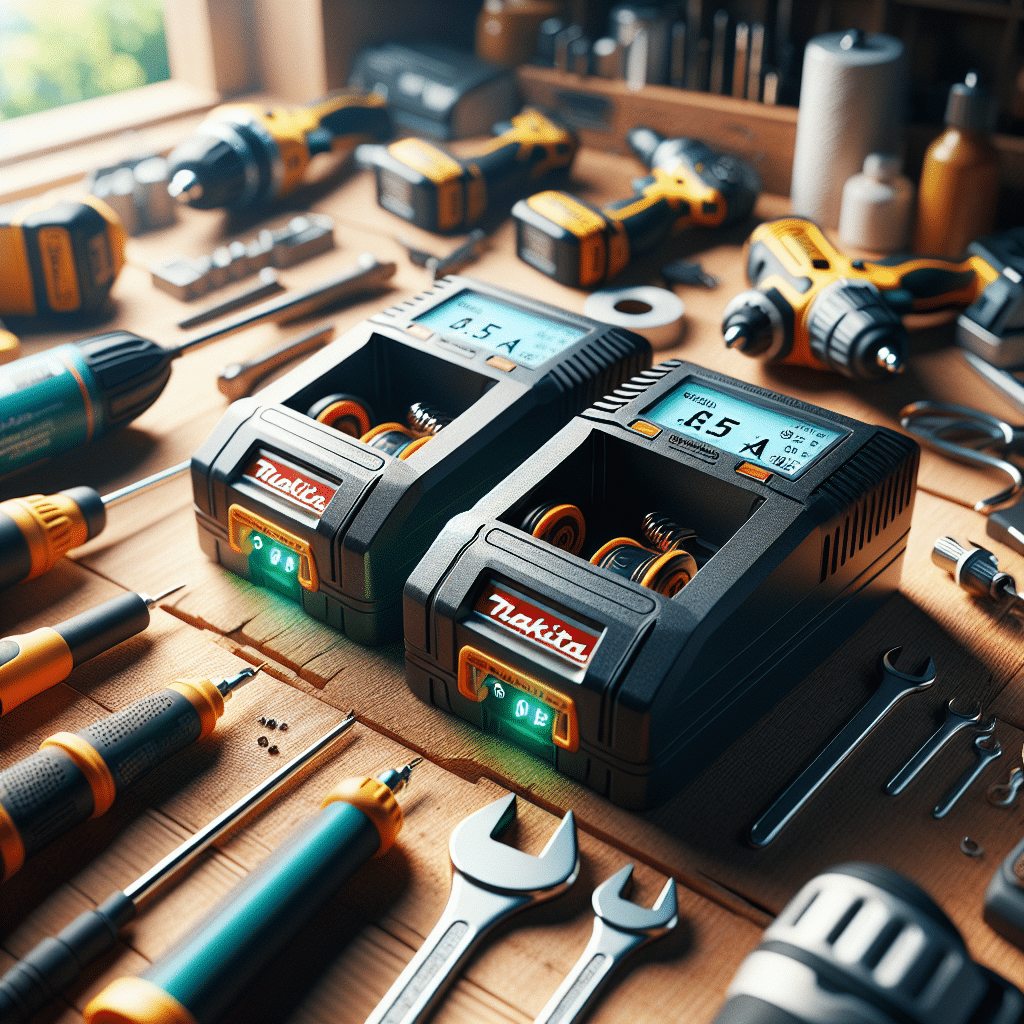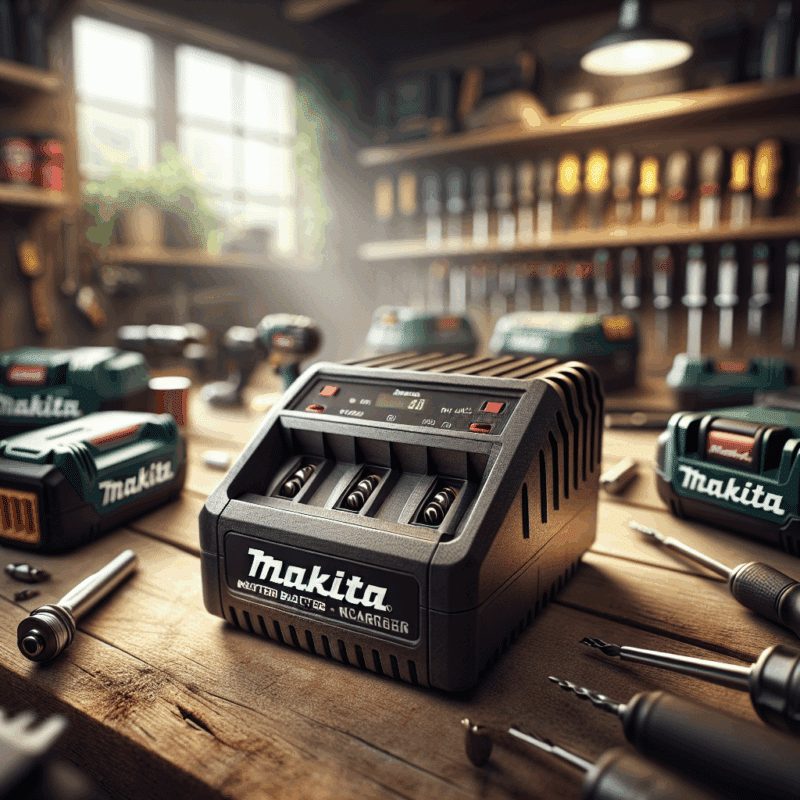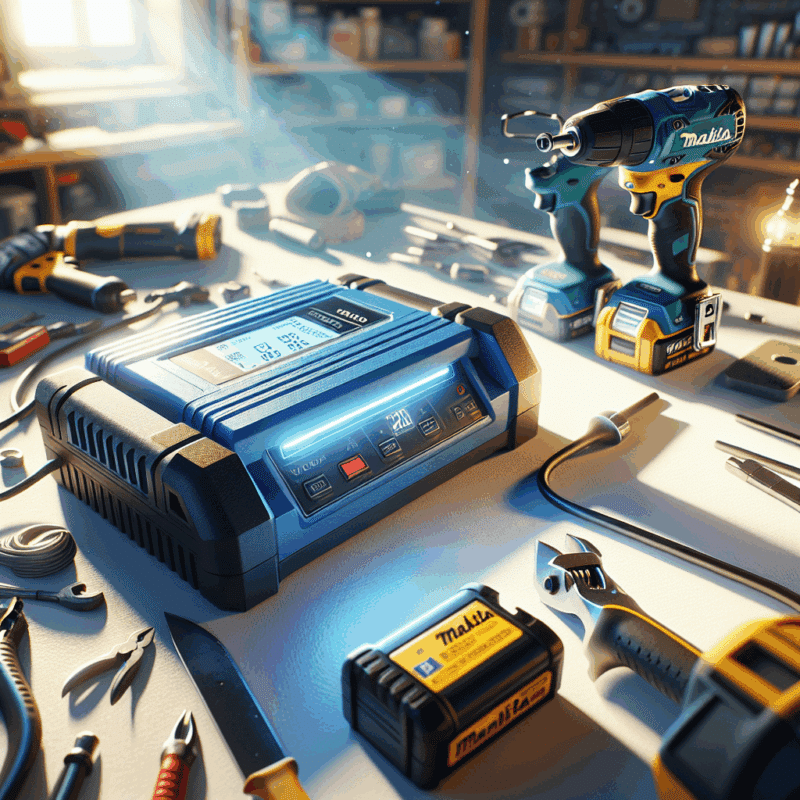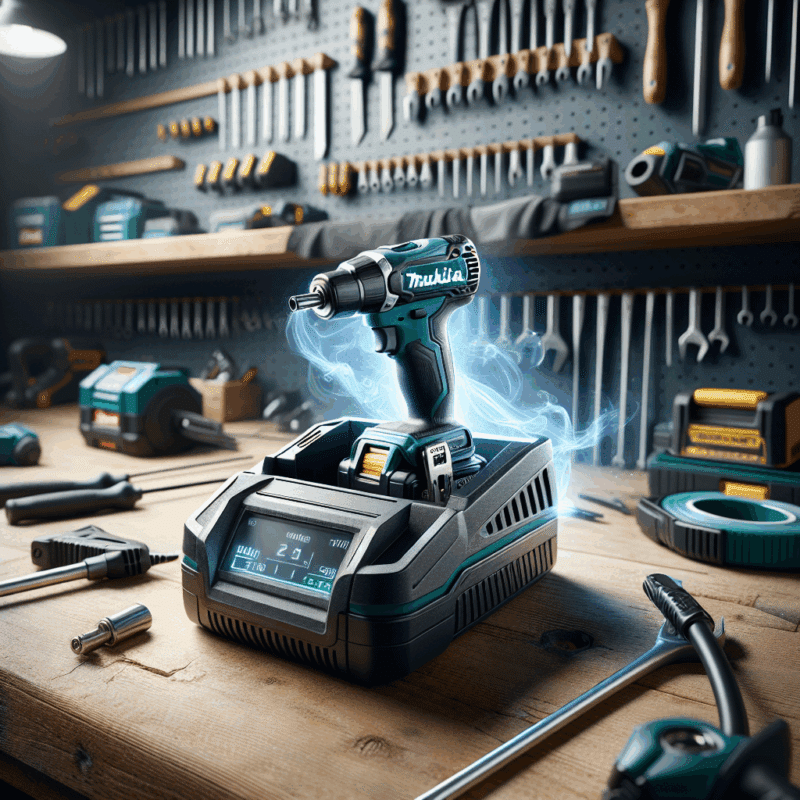6.5A vs 3.0A Chargers: Which Gets Your Projects Powered Faster?
In This Article
- The 6.5A charger drastically reduces battery charge time compared to 3.0A models.
- Improved charging speed leads directly to enhanced jobsite productivity.
- Compatible with most Makita LXT and CXT lithium-ion batteries.
- Ideal for professional users who require sustained tool uptime.
- Embedded safety features prevent overheating and battery damage.
- Switching to higher amperage can reduce battery inventory costs long term.
- Smart workshop layouts can amplify the benefits of fast charging.
- Real-world tests demonstrate 40-50% faster charge cycles with 6.5A chargers.
Why Charger Amperage Matters
Impact on Charging Time and Jobsite Efficiency
The selection of a 6.5A charger over lower-amperage options such as the 3.0A variant can have a profound impact on charging cycles, especially in high-demand environments like construction sites or industrial workshops. Amperage dictates the rate at which electrical current is delivered to a battery. Simply put, the higher the amperage, the faster the charge—provided it is within safe tolerances for the battery. For professionals who rely heavily on cordless tools, saving even 15 to 20 minutes per charge cycle translates into significant time savings over a week, month, or year.

Understanding 6.5A vs 3.0A Specs
Technical Comparison of Power Output
To understand the differences between a 6.5A charger and a 3.0A charger, it’s essential to look under the hood—literally. A charger rated at 6.5A will charge batteries at more than double the current of a 3.0A charger. This means that a standard 18V 5.0Ah battery—often used in cordless drills or saws—can be fully charged in as little as 40 minutes with a 6.5A charger, compared to over 90 minutes with a 3.0A model. Not only is faster charging more convenient, but it also reduces downtime during critical tasks. In fleet operations, this can drastically enhance tool availability.
“Switching to a 6.5A charger cut our tool-lag time in half, dramatically boosting team productivity on site.” — Site Supervisor, Midlands Roofing Co.
Compatibility with Makita Tools
One of the most frequently asked questions among Makita power tool users is about compatibility. Fortunately, the 6.5A charger is designed with backward and forward compatibility in mind. Makita’s LXT and CXT cordless platforms are engineered to work seamlessly with a wide range of chargers, provided the voltage and battery chemistry match. This means most 18V and 12V lithium-ion Makita batteries will benefit from the increased amperage without risk. Always double-check manufacturer specifications, but in general, if your tool uses a standard lithium-ion battery, a 6.5A charger should be perfectly suitable. Learn more about Power Tool Charger Performance & Comparison
Professional Use Cases for 6.5A Chargers
Trade professionals such as electricians, carpenters, roofing crews, and automotive technicians often rely on cordless power tools in environments where electrical supply is inconsistent or limited in availability. In such scenarios, speed is not just a convenience—it is a necessity. A 6.5A charger enables crews to rotate fewer batteries while maintaining a continuous workflow. This reduces the number of backup batteries required, directly cutting costs. Moreover, for those using high-demand tools like reciprocating saws or hammer drills, fast charging ensures that peak performance is maintained with minimal waiting time between tasks.
Battery Safety and Overheating Risks
With increased amperage comes concerns about overheating and battery degradation. Fortunately, modern 6.5A chargers feature intelligent thermal regulation and smart circuitry designed to monitor battery condition in real-time. These smart systems prevent overcharging, shut down charging if excessive temperatures are detected, and extend battery life by charging in stages: typically starting with a high-rate bulk mode and tapering down as the battery reaches capacity. Users should still take precautions—not using swollen or damaged battery packs, and avoiding charging in overly hot environments. Safety remains paramount across all charging operations. How charger amperage impacts charging speed
Real-World Speed Test Results
Several industry tests have compared the practical charging times of 3.0A and 6.5A chargers. On average, a 5.0Ah battery charged using a 6.5A unit reached 100% in 42 to 45 minutes. In contrast, the same battery took over 1 hour and 30 minutes to fully charge with a 3.0A unit. That’s nearly a 50% reduction in time. Repeated across a fleet of tools over an eight-hour shift, the result is a dramatic improvement in uptime and task completion. This data makes a compelling argument for any professional or company evaluating the return on investment from upgrading to a higher-amperage charging system. Read a related article
Workshop Setup Recommendations
If you’re considering transitioning your setup to accommodate a 6.5A charger, there are several infrastructure considerations. Firstly, ensure your electrical circuits are capable of handling the draw of multiple simultaneous chargers, especially if other high-powered equipment runs concurrently. Secondly, position chargers in well-ventilated areas and mount them on walls or racks to preserve bench space. It’s also wise to implement a visual tagging system to indicate battery charge status at a glance. Additionally, labelling chargers and matching them with specific battery types can reduce mismatches and ensure proper charger allocation. Organised storage equals better efficiency.
User Experiences and Community Feedback
Across forums, Facebook groups, and industry reviews, professionals regularly express positive outcomes after switching to the 6.5A charger model. For example, tradespeople in the HVAC sector reported eliminating one-third of their spare batteries because tools were constantly charged and ready. Similarly, several handyman services praised the convenience of going an entire day with just two batteries when paired with a fast charger during lunch breaks. However, some users cautioned about beating up weaker batteries if used in non-ideal conditions, which underscores the importance of battery quality and ambient temperature during charging. Building scalable multilingual websites efficiently
How to Choose the Right Charger
Choosing between a 3.0A and a 6.5A charger should involve a holistic assessment of your workload, battery inventory, and tool usage patterns. For high-frequency users, especially those running tools continuously through the day, the case is overwhelming in favour of the 6.5A option. Meanwhile, occasional or home users may find a 3.0A solution sufficient. Consider your battery capacity as well—charging a 6.0Ah battery on a low-amperage unit can be incredibly inefficient. Always source chargers from reputable manufacturers, and ensure compatibility with your battery platform to avoid issues in the field. Value longevity over low upfront cost.
Conclusion: Time Savings and Productivity Gains
[CONCLUSION_CONTENT]
Great guide on 6-5a-vs-3-0a-chargers-speed-comparison – Community Feedback
How much faster is a 6.5A charger compared to a 3.0A charger?
A 6.5A charger can charge batteries more than twice as fast as a 3.0A charger under the same conditions, reducing downtime on jobsites and increasing productivity when using power tools.
Is a higher amp charger safe for all batteries?
Always match the charger’s output to the battery’s specifications. Using a higher amp charger on a non-compatible battery may cause overheating or damage, so check compatibility for optimal safety.
Which charger is better for professional projects?
For professionals managing tight deadlines or multiple batteries, a 6.5A charger is the better choice due to its speed, provided all batteries are compatible with higher output amps.









